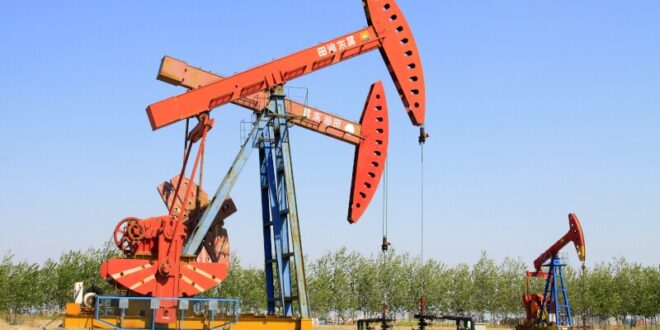China’s onshore giant PetroChina has produced what it has hailed as the first green barrel of crude oil from the Jilin oilfield it owns and operates in northeastern China’s Jilin province.
This accomplishment is part of a broader initiative aimed at mitigating carbon emissions and reducing the company’s overall carbon footprint.
The company said that at Block 3 of the Jilin oilfield, it has switched to wind-generated green electricity from thermal power. This shift has resulted in the annual conservation of 0.6 million cubic metres of natural gas, PetroChina said.
The CO2 produced along with the crude oil is reinjected into the reservoir through carbon capture and storage (CCS) technology.
Block 3 is recognised as hosting the largest assembly of onshore oil production platforms in Asia, encompassing more than 170 oil and water injection wells.
Covering an expanse of 80,500 square metres and benefiting from an average 2879.8 hours per annum of sunshine, with a peak radiation of 1050 watts per square metre, Block 3 is an essential site within PetroChina’s operations.
The Chinese state giant alone owns 6.73 billion tonnes of oil reserves, the recovery of which can be enhanced by 1.11 billion tonnes by tapping CCS-enhanced oil recovery (CCS-EOR) technology.
But to achieve that recovery goal, PetroChina will need to reinject 2.95 billion tonnes of CO2, said Yuan Shiyi of the Chinese Academy of Engineering, who is the former president of PetroChina’s Science and Technology Development Department.
To date, PetroChina has cut 5.5 million tonnes of CO2 emissions through CCS. In 2022 alone, the company reinjected 1.1 million tonnes of CO2 into depleted reservoirs, which has increased oil production by 300,000 tonnes, accounting for 70% of the total CO2 reduction through CCS technology in China.
In March this year, PetroChina started operation of its first onshore wind farm at the Jilin oilfield.
The project covers 18 onshore wind turbines with total capacity of 78 megawatts, which is able to generate 260 million kilowatt hours of electricity per annum.
The project, which will replace diesel and coal-based power generators, will be able to cut 202,000 tonnes per annum of CO2.
It is part of a larger wind project that will almost double capacity to 150 megawatts, which PetroChina plans for Jilin in the near future.
PetroChina claimed the CCS project at Jilin is the largest in Asia, with more than 2 million tonnes of CO2 injected to date.
PetroChina, led by chairman Dai Houliang, currently injects 350,000 tpa of CO2 at Jilin via 88 wells, which has increased oil production by 2000 barrels per day.
China is responsible for around 27% of all carbon dioxide emissions and one-third of the world’s greenhouse gases.
PetroChina has said that national CO2 emissions will peak at 10.6 billion tonnes in 2030. However, recent figures indicate that emissions exceeded 11.9 billion tonnes last year, signalling the ongoing need for concerted efforts in emissions reduction.

 Iran Energy News Oil, Gas, Petrochemical and Energy Field Specialized Channel
Iran Energy News Oil, Gas, Petrochemical and Energy Field Specialized Channel



